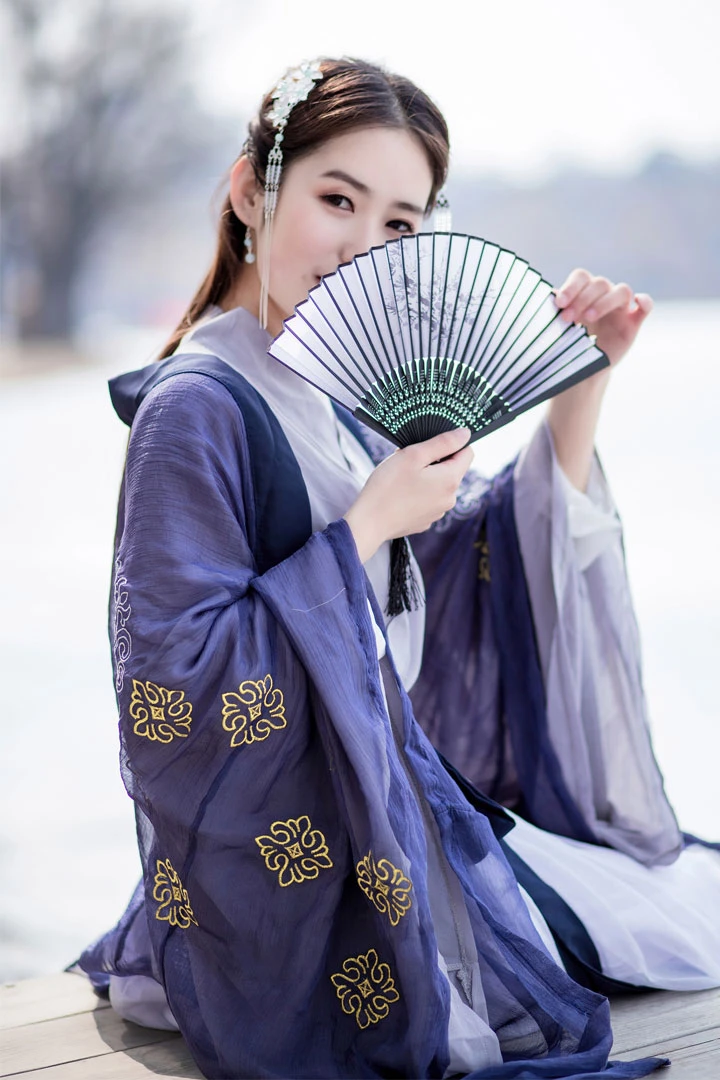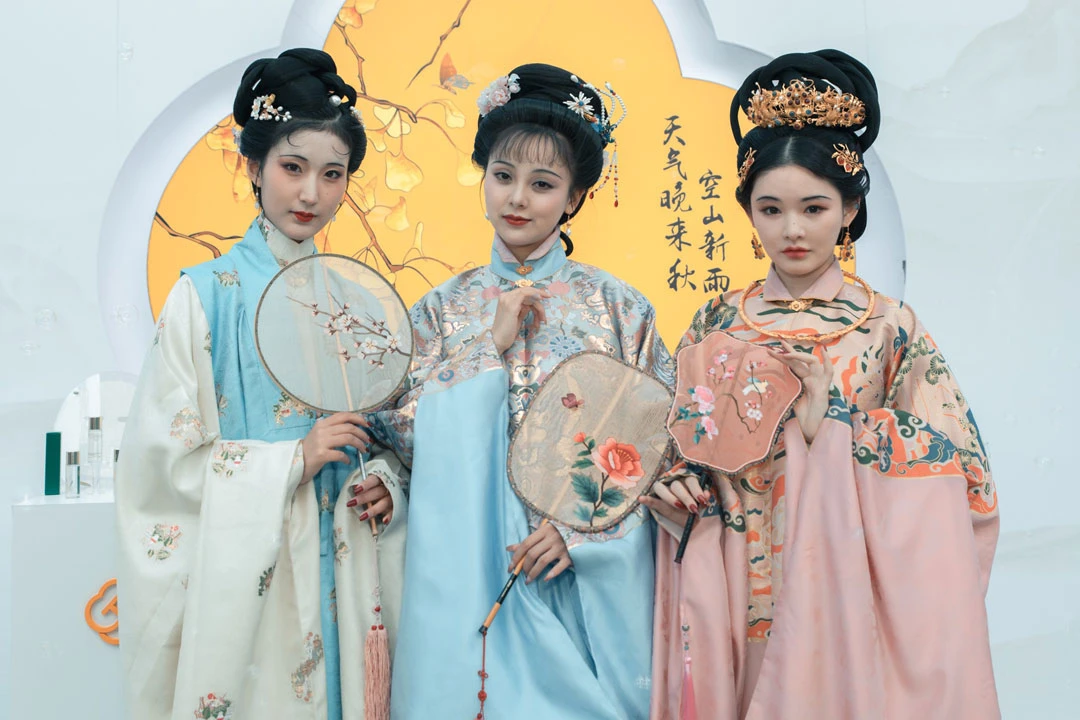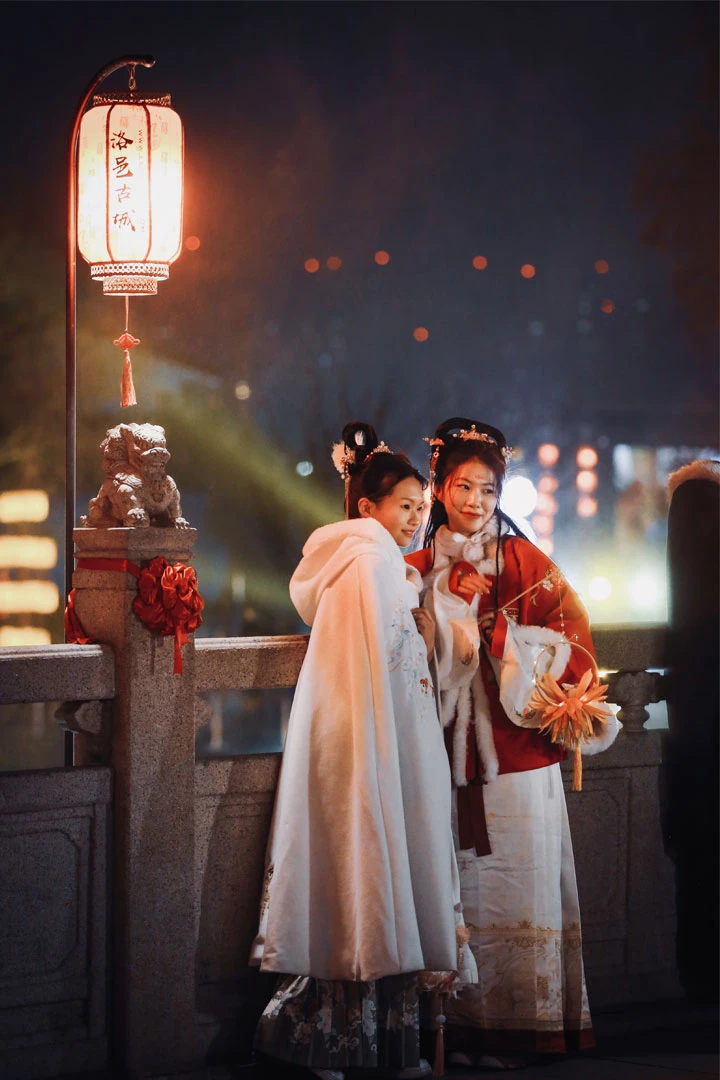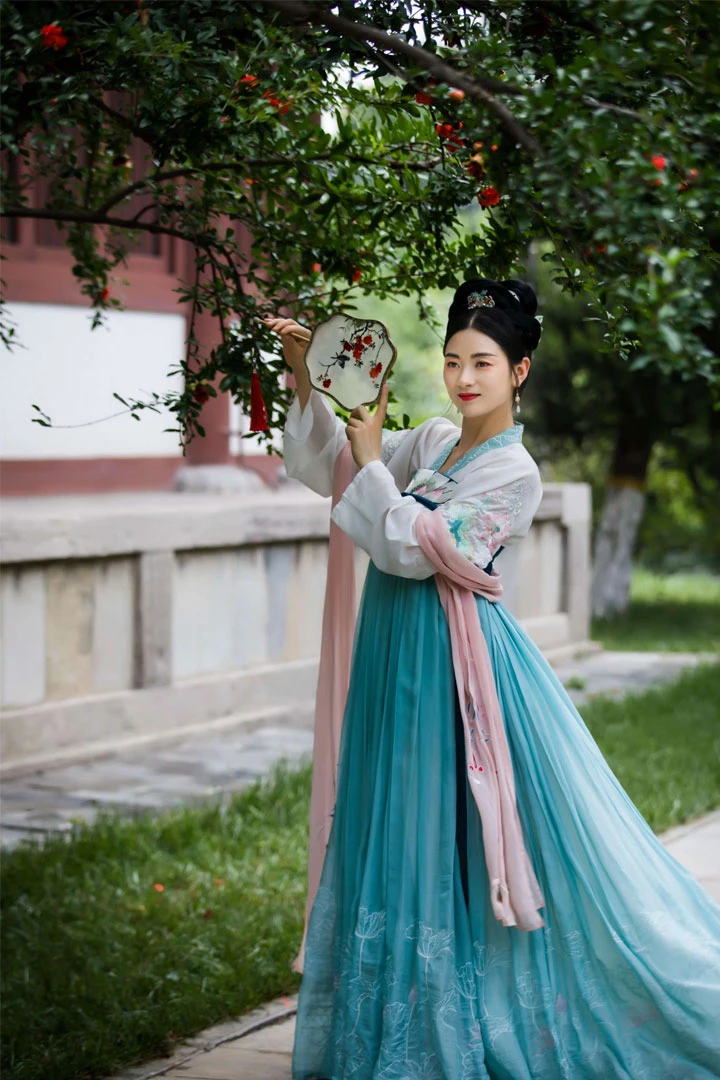there has been a remarkable resurgence of interest in traditional Chinese attire, known as Guofeng Guochao, across various regions in China. Luoyang (洛阳), renowned for its rich historical legacy as one of China's ancient capitals, has emerged as a focal point for this cultural revival. Visitors strolling through the streets of Luoyang can now frequently encounter tourists donning a variety of Tang dynasty and Song dynasty costumes. Whether riding electric bikes, commuting on buses, or capturing moments amidst pavilions and towers, these individuals have become a unique and vibrant addition to the city's cultural landscape.
The sight of tourists dressed in Tang and Song dynasty costumes is not merely a nostalgic reenactment but a celebration of cultural heritage brought to life. Luoyang's comprehensive reforms and innovative cultural tourism initiatives have played a pivotal role in revitalizing its historical narratives. By bridging the gap between ancient texts and contemporary city life, Luoyang has transformed its streets and alleyways into living testaments of its thirteen dynastic histories.

Luoyang's approach to cultural tourism goes beyond superficial displays of history; it integrates immersive experiences that resonate with both locals and visitors alike. The blend of ancient attire with modern transportation and photography exemplifies this fusion of past and present. As tourists explore Luoyang's landmarks and capture moments in traditional attire, they contribute to the city's evolving narrative as a cultural hub.
The success of Luoyang's cultural revival can be attributed to its proactive reforms and innovative strategies in tourism. By making historical texts tangible through experiential tourism, Luoyang has revitalized interest in its cultural heritage among both domestic and international tourists. This approach not only enriches visitors' experiences but also fosters a deeper appreciation for Luoyang's role in shaping China's historical and cultural tapestry.
Restoring History to Urban Life
The integration of Tang and Song dynasty costumes into everyday scenes in Luoyang signifies a broader movement towards restoring history to urban life. It transforms the perception of historical artifacts from static relics to dynamic elements that enrich contemporary cultural landscapes. This evolution not only preserves historical memory but also ensures its relevance in shaping modern identities and community pride.
Traditional Chinese attire, such as Tang and Song dynasty costumes, plays a pivotal role in expressing cultural identity and pride. In Luoyang, wearing these costumes is not merely a fashion statement but a symbolic gesture that connects individuals to their cultural roots. As tourists and locals alike embrace these traditions, they contribute to a collective narrative that honors Luoyang's past while embracing its future.
Luoyang's embrace of traditional Chinese fashion underscores its commitment to sustaining cultural legacy in a dynamic and evolving world. By integrating historical attire into everyday experiences, Luoyang enriches its cultural narrative and invites visitors to engage with history in meaningful ways. As this cultural revival continues to unfold, Luoyang stands as a beacon of heritage preservation and innovation, showcasing how ancient traditions can thrive in modern times.
Innovative Initiatives and Cultural Landmarks
Luoyang's cultural renaissance owes much to innovative initiatives that blend history with modernity. One notable effort is the integration of Tang and Song dynasty costumes into guided tours and cultural performances. Visitors can participate in themed experiences where they dress in period attire, visit historical sites, and learn about ancient customs firsthand. These immersive activities not only educate but also evoke a sense of connection to Luoyang's illustrious past.
The city's commitment to preserving its cultural heritage extends to revitalizing historical landmarks. Sites like the Longmen Grottoes, a UNESCO World Heritage site renowned for its ancient Buddhist sculptures, serve as a backdrop for cultural events that bring history to life. Visitors dressed in Tang and Song dynasty costumes against the backdrop of these majestic grottoes create a striking contrast that merges past and present seamlessly.
Furthermore, Luoyang's cultural initiatives are supported by advancements in digital technology. Virtual reality (VR) tours allow visitors to explore ancient palaces, temples, and gardens while wearing virtual Tang dynasty attire. This innovative approach not only enhances visitor engagement but also preserves fragile historical artifacts by reducing physical foot traffic.
The popularity of Tang and Song dynasty costumes in Luoyang reflects broader trends in cultural revival across China. As the country embraces its rich heritage, traditional attire serves as a visible reminder of China's enduring cultural legacy. Local artisans and designers are revitalizing ancient textile techniques to create authentic replicas of Tang and Song dynasty garments, ensuring their cultural significance is preserved for future generations.
Moreover, Luoyang's approach to cultural tourism is inclusive, catering to diverse interests and preferences. Beyond historical reenactments, visitors can participate in workshops where they learn traditional crafts such as embroidery and silk weaving, techniques integral to Tang and Song dynasty fashion. These hands-on experiences foster a deeper appreciation for the craftsmanship and artistry behind traditional Chinese attire.
The economic impact of cultural tourism in Luoyang is substantial, generating revenue that supports local businesses and community initiatives. The influx of tourists drawn to Luoyang's cultural offerings stimulates growth in hospitality, dining, and retail sectors. This economic vitality not only benefits residents but also reinforces Luoyang's reputation as a premier destination for cultural enthusiasts worldwide.
Preserving Heritage for Future Generations
As Luoyang continues to evolve as a cultural hub, sustaining its heritage for future generations remains paramount. Educational programs in schools and universities promote awareness of Tang and Song dynasty history, ensuring that young people understand and appreciate their cultural roots. Additionally, partnerships with international cultural institutions facilitate exchanges that broaden global awareness of Luoyang's historical significance.
In conclusion, Luoyang's embrace of Tang and Song dynasty costumes exemplifies its commitment to preserving and promoting cultural heritage in a rapidly changing world. By blending tradition with innovation, the city not only honors its past but also enriches the cultural landscape for generations to come. As visitors from around the world don ancient attire and explore Luoyang's storied past, they participate in a living heritage that bridges the gap between history and contemporary life.
Luoyang's journey towards cultural revitalization serves as a model for cities seeking to celebrate their heritage while embracing the opportunities of the modern age. Through thoughtful preservation, innovative tourism, and community engagement, Luoyang ensures that its legacy as an ancient capital and cultural beacon continues to shine brightly in the hearts and minds of people everywhere.



